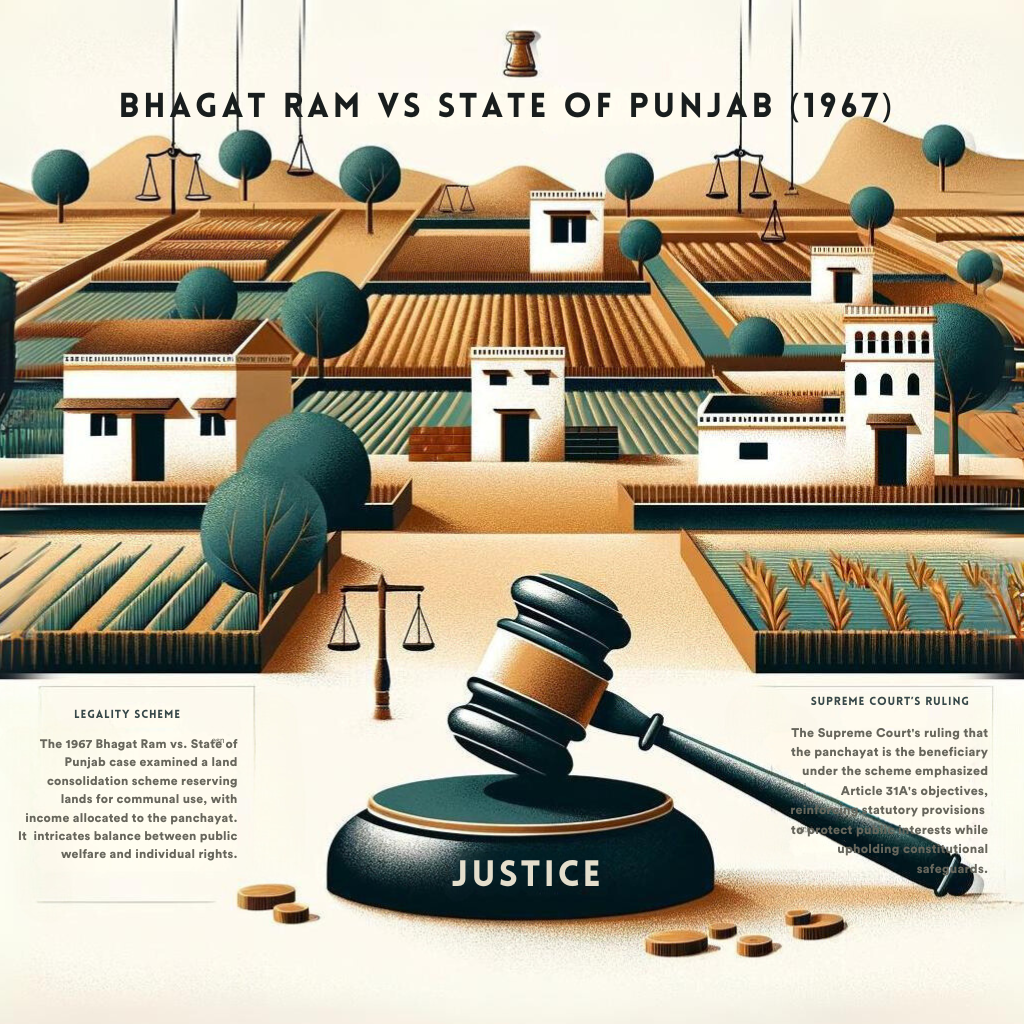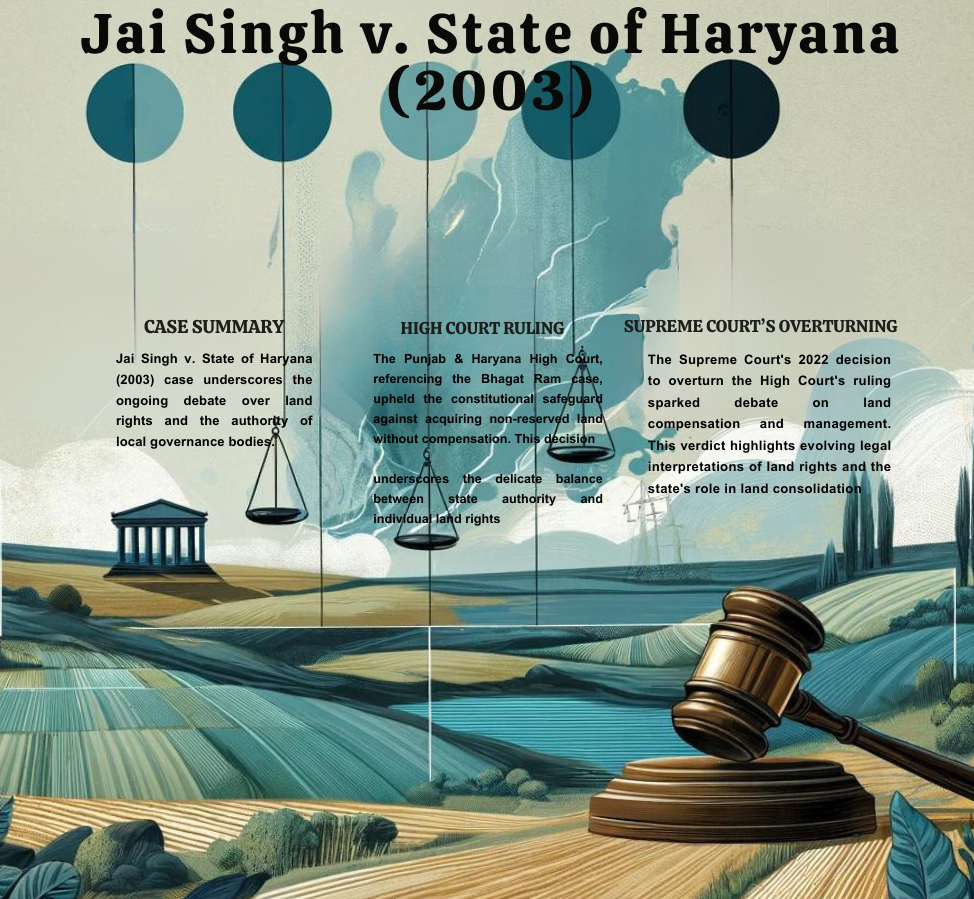
The Supreme Court’s recent decision to revisit its 2022 ruling on the issue of ‘Shamlat deh’ land has reignited discussions on the rights of village landowners in Haryana. Shamlat deh refers to land that multiple landowners jointly contribute for the common use of the village. This land plays a pivotal role in the rural economy and social structure, serving various communal purposes. The Supreme Court Shamlat Land Review 2022 judgment had significant implications for the ownership and control of such lands, favoring gram panchayats’ authority over them. However, the decision faced criticism for possibly overlooking vital constitutional provisions and precedents set by earlier landmark judgments.
The Supreme Court Shamlat Land Review aims to ensure that the rights of landowners are protected while considering the legal framework governing Shamlat deh land. This move underscores the Court’s commitment to upholding justice and constitutional integrity, making it a crucial case for judiciary aspirants to follow for its implications on property rights and local governance.
Facts
- Supreme Court Review: The Supreme Court has decided to review its 2022 judgment concerning ‘Shamlat deh’ land, which affects the rights of village landowners in Haryana. This decision comes after recognizing the need to reconsider the ruling that allowed gram panchayats to acquire such land.
- Historical Context – Bhagat Ram vs State of Punjab (1967): A landmark case where the Supreme Court differentiated between state acquisition of land and the modification/extinguishment of land rights. It ruled that diverting land income to panchayats qualifies as acquisition, thus supporting landowners’ rights under Article 31A.
- Jai Singh v. State of Haryana (2003): The Punjab & Haryana High Court ruled that gram panchayats could only control land reserved for common purposes under the Consolidation Act. It held that acquiring non-reserved land without compensation was against Article 31A’s second proviso.
- 2022 Supreme Court Decision: Overturned the 2003 High Court ruling, suggesting that compensation was not needed as Article 31 had been omitted post the forty-fourth constitutional amendment. It asserted that gram panchayats weren’t acquiring the land but managing it on behalf of landholders, hence not invoking Article 31A’s second proviso.
- Karnail Singh v. State of Haryana (2024): Criticized the 2022 decision for not adequately addressing the Constitution Bench’s ruling in Bhagat Ram and for misinterpreting the control of land in panchayats. This led to recalling the 2022 decision for a reassessment.
- 44th Amendment & Article 31A: The 44th Amendment Act removed the right to property as a fundamental right and modified Article 31A, impacting laws related to land acquisition and rights. Despite these amendments, the Supreme Court’s review emphasizes the importance of adhering to established constitutional provisions.
- Proviso & Sub-Article of Article 31A: Clarifies the conditions under which land acquisition laws must operate, including the requirement for the President’s assent and the provision for compensation equal to market value for lands under personal cultivation within the ceiling limit.
Issues Involved
The heart of the controversy in the hearings of the cases spanning from Bhagat Ram vs State of Punjab (1967) to Karnail Singh vs State of Haryana (2024) lies in the interpretation and application of Article 31A of the Indian Constitution, particularly about ‘Shamlat deh’ or common land. The issues pivot around whether the land reserved for the common purposes of a village, when managed or controlled by gram panchayats, constitutes an acquisition of property by the state requiring compensation under the law, especially after the omission of Article 31 following the 44th Amendment.
The Supreme Court’s reevaluation also probes into the procedural correctness of such land control—whether it vests upon assignment or after the transfer of possession, scrutinizing the legitimacy of altering land rights without direct compensation and its concordance with constitutional safeguards against the arbitrary deprivation of property. Moreover, this examination not only seeks to clarify legal precedents but also aims to strike a balance between communal land management and individual property rights, making it a landmark discussion with profound implications for landowners and village governance.
Bhagat Ram vs State of Punjab (1967)

Legality of Land Consolidation Scheme
The 1967 case of Bhagat Ram vs the State of Punjab delved into a land consolidation scheme aimed at reserving lands for common purposes, with its income directed to the panchayat. This scheme was contested under Article 31A for potentially violating land acquisition norms, highlighting the intricate balance between public welfare and individual rights.
Differences Between State Acquisition and Modification of Rights
The Supreme Court’s clarification distinguished between the state’s acquisition of land and the mere modification or extinguishment of land rights. This distinction is crucial for understanding the legal boundaries of state intervention in land ownership and the rights of individuals.
Supreme Court’s Ruling
The Supreme Court’s ruling in favor of considering the panchayat as the beneficiary under the scheme underscored the broader objectives of Article 31A. Hence, this decision reinforced the role of statutory provisions in safeguarding public interests while adhering to constitutional protections.
Jai Singh v. State of Haryana (2003)
Challenge to 1992 amendment to the Punjab Act
The challenge against the 1992 amendment to the Punjab Act by Jai Singh v. State of Haryana brought to light the contentious issue of Shamlat deh land and its control by gram panchayats. This case underscores the ongoing debate over land rights and the authority of local governance bodies.
High Court Ruling
The Punjab & Haryana High Court’s decision, rooted in the precedent set by the Bhagat Ram case, emphasized the constitutional safeguard against acquiring non-reserved land without compensation. This ruling highlights the critical balance between state authority and individual land rights.

Supreme Court’s Overturning of the High Court Decision in 2022
The Supreme Court’s decision to overturn the High Court’s ruling in 2022 stirred significant discourse on compensation and land management. This verdict reflects the evolving legal interpretations of land rights and the state’s role in land consolidation and management.
Karnail Singh v. State of Haryana (2024)
Criticism of the 2022 Decision
The Karnail Singh Bench’s critique of the 2022 decision underscores the importance of adhering to constitutional bench rulings and ensuring that legal precedents are not disregarded. This criticism indicates a commitment to legal consistency and the protection of land rights.
Recall of the 2022 Decision
The recall of the 2022 decision and the announcement of a rehearing signify a reevaluation of the legal framework governing land rights and panchayat authority. This move points to the judiciary’s role in constantly reassessing its interpretations to align with constitutional values and precedents.
Also explore Kedarnath Singh vs State of Bihar, 1962
44th Amendment related to Article 31 A
The 44th Amendment’s impact on Article 31A and the broader implications for property rights reflect a significant shift in the constitutional understanding of property. This amendment marks a critical juncture in the evolution of legal protections for property owners in India.
Article 31A of Indian Constitution
Article 31A encompasses a wide range of state actions related to land and property, protecting these actions from being challenged on the grounds of infringing upon fundamental rights. This provision illustrates the constitution’s approach to balancing individual rights with the state’s authority.
Position of Fundamental Rights
Article 31A’s immunity to challenges based on Articles 14 or 19 underscores the special status accorded to laws enacted under its provisions. This immunity reflects a strategic approach to land reform and property rights within the constitutional framework.
Proviso
The proviso within Article 31A that requires presidential assent for state laws underscores the importance of central oversight in matters of land acquisition. This mechanism ensures that land reforms and acquisitions adhere to national standards and constitutional protections.
Sub-Article
The definitions of “estate” and “rights” within the context of Article 31A provide a legal framework for understanding land tenures and the associated rights. This legal clarity is essential for the administration of land laws and the protection of landowners’ rights.
Observations
The evolving jurisprudence surrounding ‘Shamlat deh’ land, as depicted through various landmark cases, underscores the complex interplay between constitutional provisions, state legislation, and the rights of landowners versus community interests. Initially, the Bhagat Ram case set a precedent by distinguishing between state acquisition of land and the modification or extinguishment of land rights, emphasizing the necessity for compensation when land rights are altered under Article 31A of the Constitution. This principle was reaffirmed in the Jai Singh case, where the High Court upheld the rights of individual landowners against uncompensated acquisition by gram panchayats. However, the 2022 Supreme Court decision diverged from this path, suggesting that gram panchayats could assume control over Shamlat deh land without compensating the landowners, a stance corrected by the Karnail Singh case, which called for a reevaluation of this interpretation.
For judicial aspirants, these observations offer a rich tapestry of legal principles, constitutional safeguards, and the dynamic nature of judicial interpretation. They illustrate the vital role of the judiciary in balancing individual rights with collective welfare, a balance pivotal in the governance of a diverse nation like India. This unfolding legal saga also serves as a reminder of the importance of adhering to precedents and the need for clarity in legal provisions to avoid ambiguities that might undermine property rights. Moreover, as future leaders of the nation, judiciary aspirants must ponder ways to improve our legal system to ensure it remains responsive, equitable, and just, not only in letter but in spirit. Reflecting on cases like these offers invaluable lessons on the significance of protecting individual rights while promoting social welfare, a dual mandate that lies at the heart of India’s constitutional ethos.

